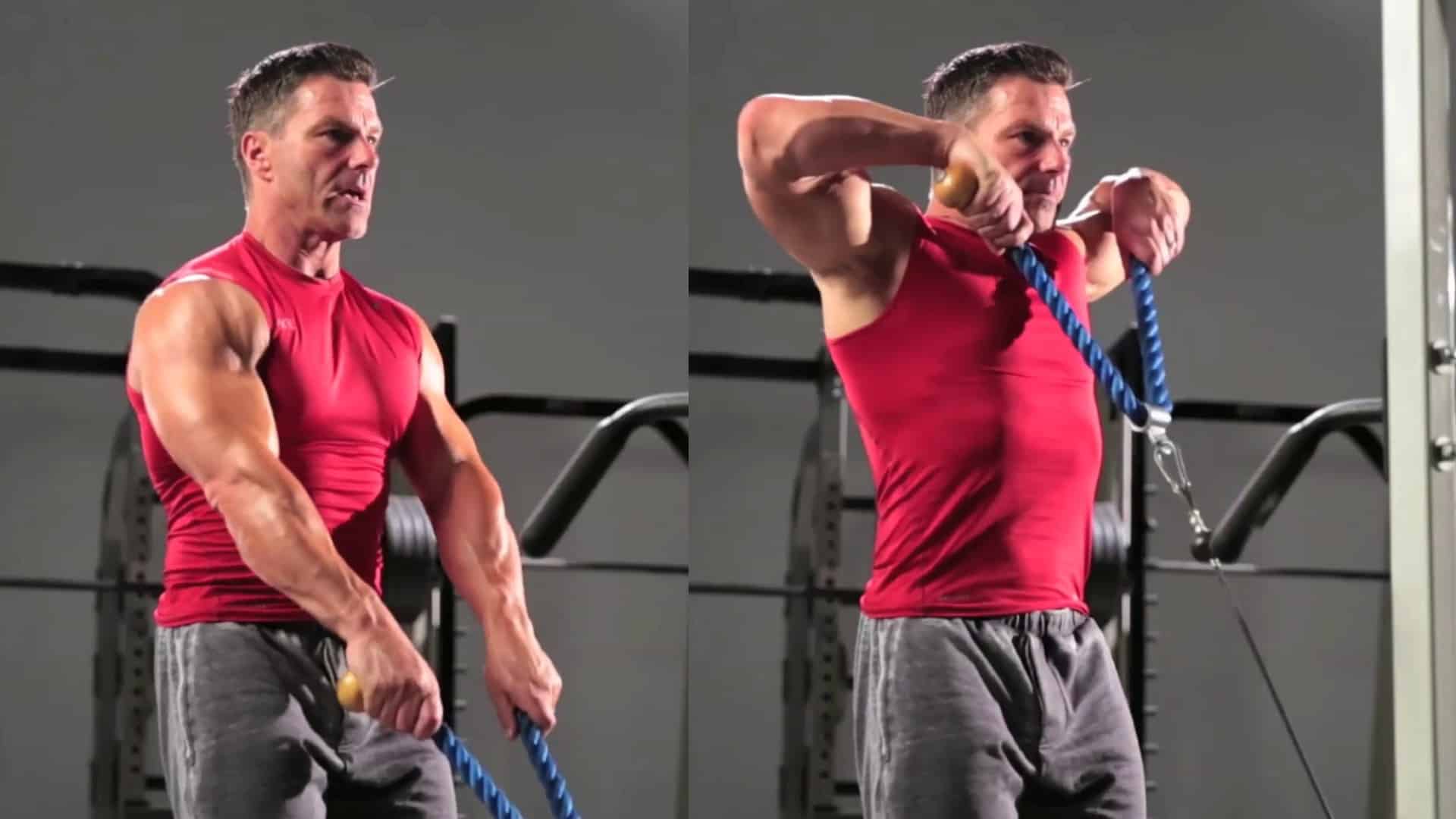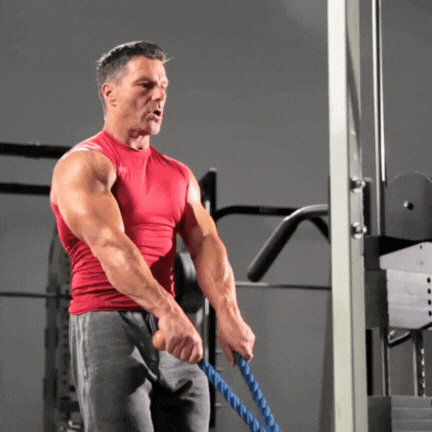The cable rope upright row is a variation of the upright row that primarily targets the muscles of the shoulders, including the deltoids and the trapezius, as well as the upper back.
Regularly performing this exercise will likely accelerate muscle growth and strength in your back, biceps, and shoulders.
One of the benefits of the rope upright row is that it keeps the target muscle group in constant tension throughout the range of motion.
It is also a more shoulder-friendly variation of the upright row, as it allows the hands some freedom of movement so that your grip width can vary throughout the lift.
You must read this to learn how to perform the rope upright row exercises safely and effectively.

Cable Rope Upright Row Muscles Worked
The cable rope upright row is a good upper-body workout primarily targeting the shoulder muscles, specifically the lateral deltoid.
- Primary Muscles Worked: lateral deltoid heads.
- Secondary Muscles Worked: trapezius (Upper trapezius), Biceps Brachii and Brachialis
- Stabilization Muscles Worked: Rotator Cuff, Core Muscles, Forearm Muscles
Want to take your gains to the next level? Discover your daily calorie needs with our free TDEE calculator
How To Do Upright Row With Cable Rope

- Set the pulley to the lowest position and grab an end of the rope in each hand with an overhand grip.
- Stand close to the pulley with your body upright, your shoulders pulled back.
- Keep the rope close to your body and pull it up towards your chin.
- Your elbows should be higher than your hands to drive the movement.
- Pull the rope up to the mid-chest or just below your chin level.
- Pause at the movement’s top, then slowly lower the rope back to the starting position.
Proper Form and Technique
- I always start with a lighter load to maintain perfect form. Remember, it’s not about how much weight you can pull but how effectively you can target the intended muscles.
- Keep your elbows higher than your wrists throughout the movement.
- Pull the rope only to your shoulder level. Pulling it any higher puts unnecessary strain on your joints.
- Don’t roll your shoulder forward. Make sure your chest is proud and your shoulders pulled back/together.
- As with any lift, maintaining a strong and stable core throughout the lift will aid with bracing and thus protect the spine.
- Don’t allow your back to arch as you pull the rope up; don’t let excess weight dictate your body mechanics.
- Choose sets and reps based on how well you can do the move without losing good form. Start with 2–3 sets of 8–12 reps.
Thanks for reading.

Manish brings over 10 years of hands-on experience in weight lifting and fat loss to fitness coaching. He specializes in gym-based training and has a lot of knowledge about exercise, lifting technique, biomechanics, and more.
Through “Fit Life Regime,” he generously shares the insights he’s gained over a decade in the field. His goal is to equip others with the knowledge to start their own fitness journey.
